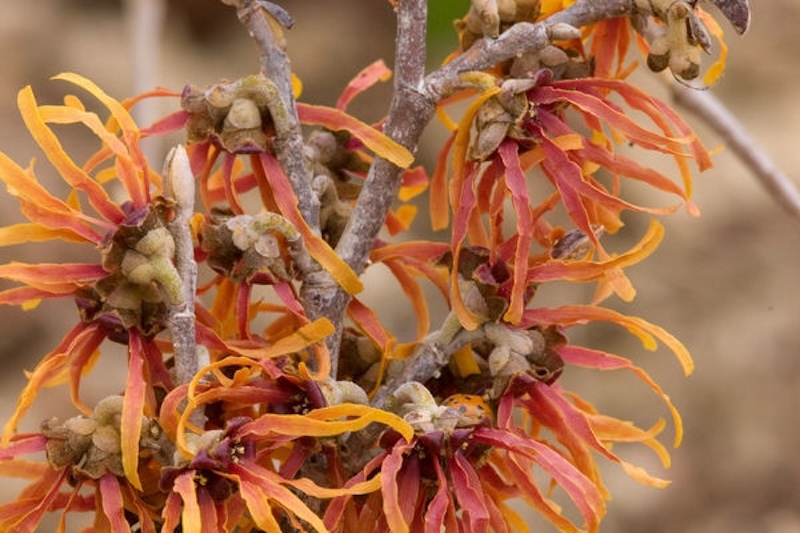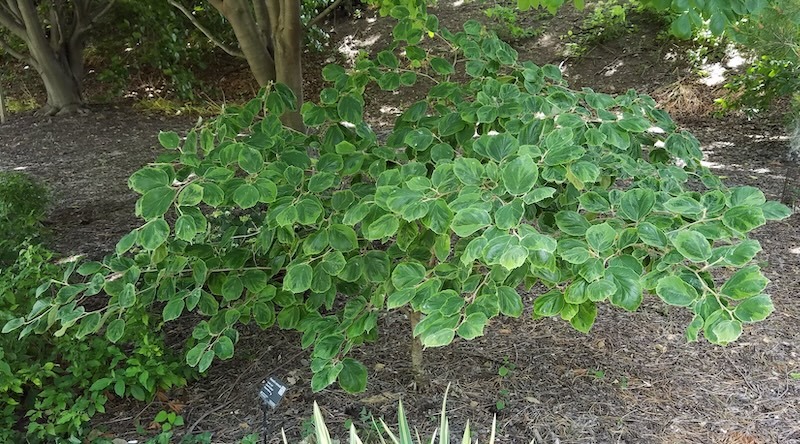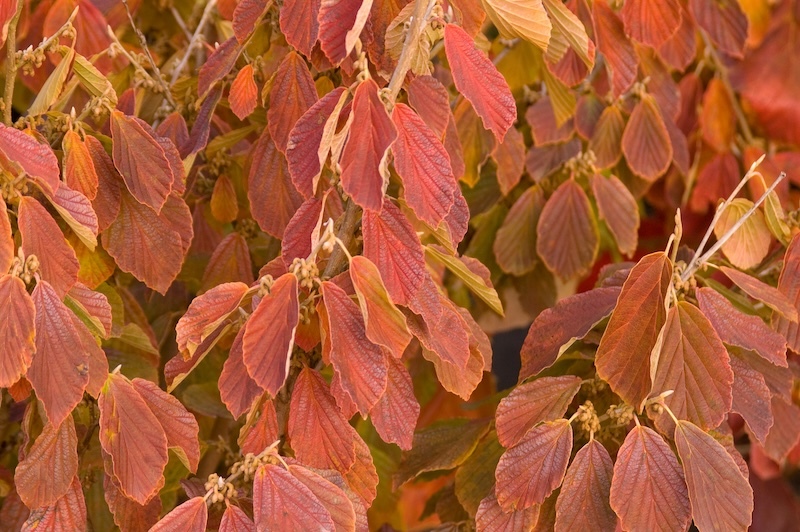Growing Witch Hazel
Witch hazel is commonly grown as a specimen tree or multistemmed shrub to add interest to the garden in winter or early spring. Native witch hazels (Hamamelis virginiana, H. vernalis, and H. ovalis) produce yellow-hued flowers in winter, which are a valuable source of nectar for early pollinating insects. The Asiatic hybrids (Hamamelis mollis and H. japonica) tend to bloom in early spring in shades of fiery red, orange, and gold.

The size of witch hazel ranges from 10-30 feet tall, although most varieties top out at 12-15 feet after ten years. This showy, woody plant can be added to a mixed hedge or a garden border containing winter and spring bloomers. Gardeners with smaller spaces can grow witch hazel in large containers for many years. This shrub is exceptionally cold tolerant with many varieties hardy to zone 5a.
Planting Witch Hazel
Witch hazel needs soil that retains moisture but also drains well throughout the year. A neutral to acidic pH supports the best growth. Plant this shrub in at least 4 hours of direct sun exposure for the best flower display. Although witch hazel is fairly hardy, it benefits from a sheltered location to the north of a building or under larger trees and shrubs. Witch hazel can be planted any time during the year when the ground is not frozen or overly soggy.

Plant a root-grafted hybrid witch hazel so the graft union is above the soil line. This helps control suckering later as the tree matures.
Watering Witch Hazel
Water newly planted witch hazel consistently for the first year or two. Watering spaced out every 3-4 days will help the roots grow deep in the soil and develop drought tolerance. Bare root shrubs planted during late fall or winter typically establish quickly and require less watering through the summer. Container-grown shrubs can be planted through the summer and will require supplemental watering well into the fall.
Fertilizing Witch Hazel
Witch hazel is not a heavy feeder and only requires a side-dressing of organic compost in the spring or late summer. Mulching with other organic materials in a thick 2-3 inch layer will help suppress weed growth while adding nutrients to the soil as it decomposes in place. Finely shredded leaves, arborist chips, or pine needles are ideal and often available for free.
Pruning Witch Hazel
Winter-blooming witch hazel blooms before the foliage begins to grow. After flowering and before the leaf buds develop is the perfect time to prune lightly for shape and to thin out crossing or damaged branches. Spring-blooming witch hazel blooms on the previous season's growth and should only be pruned after flowering ends late in the spring.
Although witch hazel is considered deer resistant, young plants and new growth may be damaged by browsing. Caging and tree wrap can be used to protect young plants from deer. Some varieties of witch hazel may send up sucker shoots from the base. These should be cut off from under the soil line to keep the shrub from reverting to its grafted root base.

Caring For Witch Hazel in Pots
Containers are a great way to grow witch hazel in smaller yards. Consistent watering is key to keeping container-grown trees and shrubs healthy year-round. The pot should have excellent bottom drainage and a diameter at least 2-3 inches larger than the shrub’s rootball. Use an all-purpose, outdoor potting mix for good drainage and healthy root growth.
Winter Care For Witch Hazel
Witch hazel should be planted in a somewhat protected location, out of the path of prevailing winds and winter storms. This shrub tolerates salt spray and can be planted near roads and coastal areas. Gardeners living in the lower zones of the hardiness range should consider moving potted witch hazel to a protected location where the shrub will still receive natural precipitation. The seeds of witch hazel need one year to develop on the plant and then another full year of seasonal stratification before germinating.
Sources:
“Hamamelis hybrids.” North Carolina Extension Gardener Plant Toolbox. plants.ces.ncsu.edu
“Hamamelis virginiana.” North Carolina Extension Gardener Plant Toolbox. plants.ces.ncsu.edu
“Witchhazel: The Gardener’s Missing (Winter) Link.” N.C. Cooperative Extension. extensiongardener.ces.ncsu.edu
